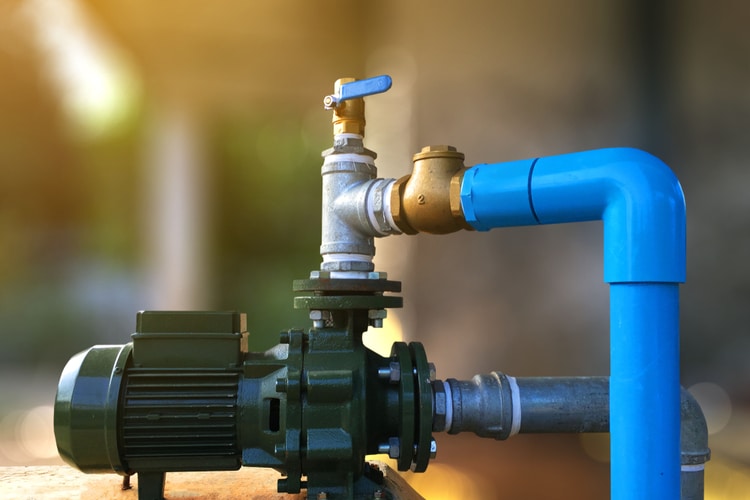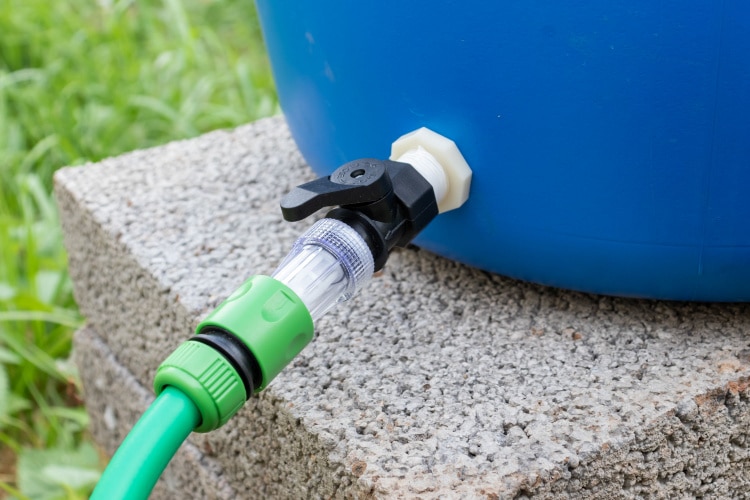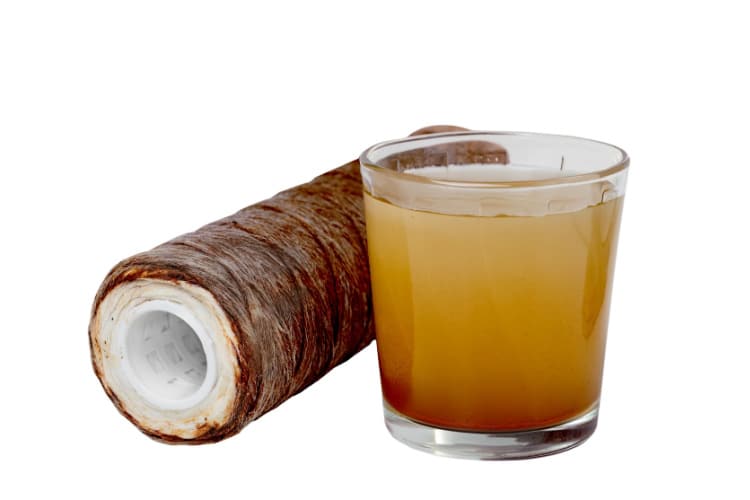The biggest concern for homes that rely on wells as their main water supply is the possibility of the water flow stopping for no obvious reason.
Suddenly no water from well is usually caused by a faulty well water pump, failing pressure tank, sediment buildup in the water pump or faulty hose and valves.
Luckily, this issue can be resolved by troubleshooting and fixing or completely replacing faulty components.
Well water not working:
An Issue With The Water Pump
Well water gets to the house by way of a water pump that’s installed in the well itself. This one piece of machinery is responsible for extracting water from the well, so it only makes sense for it to be the first component to troubleshoot.

There are more than a few issues that can crop up when it comes to water pumps, but we’ve outlined the most frequent ones, as well as ways to fix them.
Common well pump issues:
Well Pump Overuse
No piece of machinery can work indefinitely. A big issue that larger homes have is that the more people there are in the house, the larger the water requirements are going to be.
When a dozen people are all using the faucets at the same time, it means that the water pump is constantly working to meet the demand. This constant draw can affect the pressure, cause strain on the gears, and it can even cause the water hose/pipe to rupture.
You can easily tell if the pump is overloaded or overworked by a significant drop in water pressure throughout the house. Another common sign is water coming out in bursts or simply not coming out of the faucets for a short time.
Solution to pump overuse:
Water pumps get worn out if they can’t keep up with your household’s water demands. If you live in a large home with more than 6 people, we’d suggest trying to have as few people use the faucets at the same time as possible.
You don’t need to come up with a schedule or anything like that, but it’s probably best to tell others when you need to use a lot of water so that they can wait their turn and not burden the water pump unless it’s important.
Additionally, if you live in a large house and the water pump seems to be struggling to keep up with your needs, then we suggest simply getting a larger and more powerful pump since the one you have clearly isn’t cutting it.
Low Pressure in Pressure Tank
The well pump pumps water into a pressure tank. Inside this tank is an air bladder that provides the necessary pressure for water to flow from the pressure tank into the house. In order for this to work, the hose that leads into and out of the bladder needs to be under pressure.
Your tank should have a gauge somewhere around the bladder or right above it. Find this gauge and check it to see what the pressure is. There aren’t any specific parameters – all you’re trying to see is whether or not the dial is at 0.
If the dial is showing you zero, then it simply means that air is leaking from somewhere, and it’s causing the whole water pumping process to fail.
Solution to Low Pressure:
Inspect the pressure tank and air bladder to ensure there’s no damage to either of them. Cracks on the tank and tears in the bladder can lead to air leaking out; thereby depressurizing the tank.
If the bladder is badly damaged, then the only choice is to buy a new one. Keep in mind that accessing the air bladder requires you to be able to open the pressure tank. Certain units are held together with bolts that are relatively easy to unbolt if you know how to use a wrench.
However, if your pressure tank is the type that’s welded together, then the only option that you have is to get an entirely new tank.
If you can’t simply replace the air bladder and you need to get a new tank, then we’d suggest hiring a professional to look into it first.
Trying to fix a well water problem on your own is okay if the issue is easy to fix or the parts are cheap to replace. However, when it comes to something expensive like the pressure tank, it’s best to err on the side of caution and spend some cash to get a second opinion before you actually go looking for new parts.
Power Surge or Outage
Water pumps run off of electricity, so they can be affected by a power outage or a power surge. Most pumps have good grounding or at least some sort of surge protection which should keep you covered in most situations, but there could still be a freak lightning strike somewhere near you or a sudden short jump in the voltage in your neighborhood.
Even equipment that’s protected against such eventualities is not infallible, so it’s always worth considering whether your issue is electrical.
Solution to Power Surge or Outage:
There are different types of circuit breakers, but if your home has one with a built-in surge protector, then all that’s probably happened is that a breaker might be down. Inspect the circuit box and see if any of the switches are flipped in a different direction from the others.
Switch the flipped switches back on again and try to run your faucet. If this works, the system simply needed to be reset.
Speaking of resetting, if you suspect an outage or a surge caused your pump to stop working, then you can use the age-old method of turning it off and back on again. It’s simple, but it works a lot of the time.
And finally, if you have no surge protection at all and your pump got hit with a voltage spike that it’s not equipped to deal with, then there might be some damage. If you have tried all the methods that we mentioned so far and the pump still isn’t working, then you might need to completely replace it.
Faulty Valves and Hoses
Starting at the well and ending at the faucet, there are many components that need to work properly in order for you to get water into your home.
The pump needs to draw the water, the pressure tank needs to provide the push and pull that transports the water, and the water tank needs to take in all of the water and distribute it throughout the house. Things get even more complicated if you also add a water softener into the mix.

The entire well system has a lot of working parts and a lot of different components that are connected to one another. The connections made by valves and hoses, in particular, can cause the most issues.
Any leaking from any of these interconnecting components can cause the water pressure to drop and leave you without any water in your home.
Solution to Faulty Valves & Hose:
It’s very easy to tell if there’s a leak in any hose. Start at the well and follow all of the interconnected components that lead to your home. If there’s water pooling anywhere, then you have a damaged hose on your hands.
You can always use the old tried-and-tested method of duct taping the hole to fix the issue, but honestly, hoses are so cheap that it’s a much smarter option to just buy a new one. If the stores are closed or if it’s a Sunday, then the tape method is a good temporary fix.
Valves are a little less obvious when it comes to noticing leaks. However, you can still notice if water is escaping if you just run your fingers around the connection where the valves and the hoses meet, and your fingers come away wet.
Another method is simply checking the pressure in the pressure tank, the water tank, and the water softener. A pressure dial that’s in the red or at 0 is a pretty obvious indication that there’s something wrong.
Much like with hoses, you don’t fix valves – you replace them. Luckily, these are also relatively inexpensive components.
Sediment Clogging

The biggest issue with well pumps is that the water that gets drawn is unfiltered. On the one hand, this means that the water has a smaller chance of containing any artificial chemicals. On the other, this lack of filtration also means that the water is full of sediment and minerals.
Hard water minerals are the reason why water softeners are often considered essential gear for anyone with well as the main water source, and the sediment is why pre-filters are so important as well.
Sediment Filters (or Pre-filters) are essentially sieves that catch larger pieces of dirt and sediment to prevent them from getting into your main water system.
If a pre-filter gets clogged up or can’t catch the larger dirt particles anymore, then the water can’t enter the system, and you won’t get water coming out when you turn on the faucet.
Solution to Sediment Clogging:
There are several different ways to diagnose and fix this issue.
Regular maintenance of the pre-filter is the most obvious choice. Go to your well, take out the filter from the casing and check if it’s covered in dust and dirt. Once you’ve removed it, rinse it out, make sure that it’s clean, and place it back into the casing.
Filters also need to be replaced occasionally. The timeframe will vary depending on the model that you’re using, but it’s usually around every 3 – 6 months. However, if you find that your water consumption is above average and the filter keeps clogging up, then you should replace it more frequently.
The final thing to do regarding the pre-filter is to check to see if it’s damaged. When it comes to sediment and large dirt particles, they can lodge themselves into most of the filter components and do a decent bit of damage.
Check the input pipe, the entry valve on the pre-filter, and the filter itself. You’re looking for any visible damage that might have been caused by dirt. If there’s nothing that you can see, then there’s a good chance that things are ok.
However, if you don’t trust yourself to be able to spot something like that, then having a plumber check things for you is always an option.
Conclusion
To sum up, if you’re not getting any water from your well, the things that you need to check are your pump, your connections, and your sediment filter.
Make sure that the pump has power, that the pressure is good, and that you’re not using a pump that’s too small for your household needs.
Go through all of the hoses and valves on your devices and check to see that there are no leaks where water might be escaping.
And finally, make sure that you maintain the sediment filter on a regular basis, and that you replace it in order to ensure that it’s working properly.
If any of the things that we mentioned seem a bit too difficult to pull off on your own, then it’s better to pay a bit of money and hire a professional rather than risk damage to your well water system.
After attempting to get my well going again by hitting the reset button on the wellhead, long story short – my submersible well pump had one of two capacitors that crapped out. The other issue was the power from the pole to the weatherhead had issues (insufficient power). Thank goodness for handyman friends with voltage/multimeter thingamabobs, who identified both problems – I now have water again, and my other power issues have been resolved (by the power company). Thank you so much for your article!